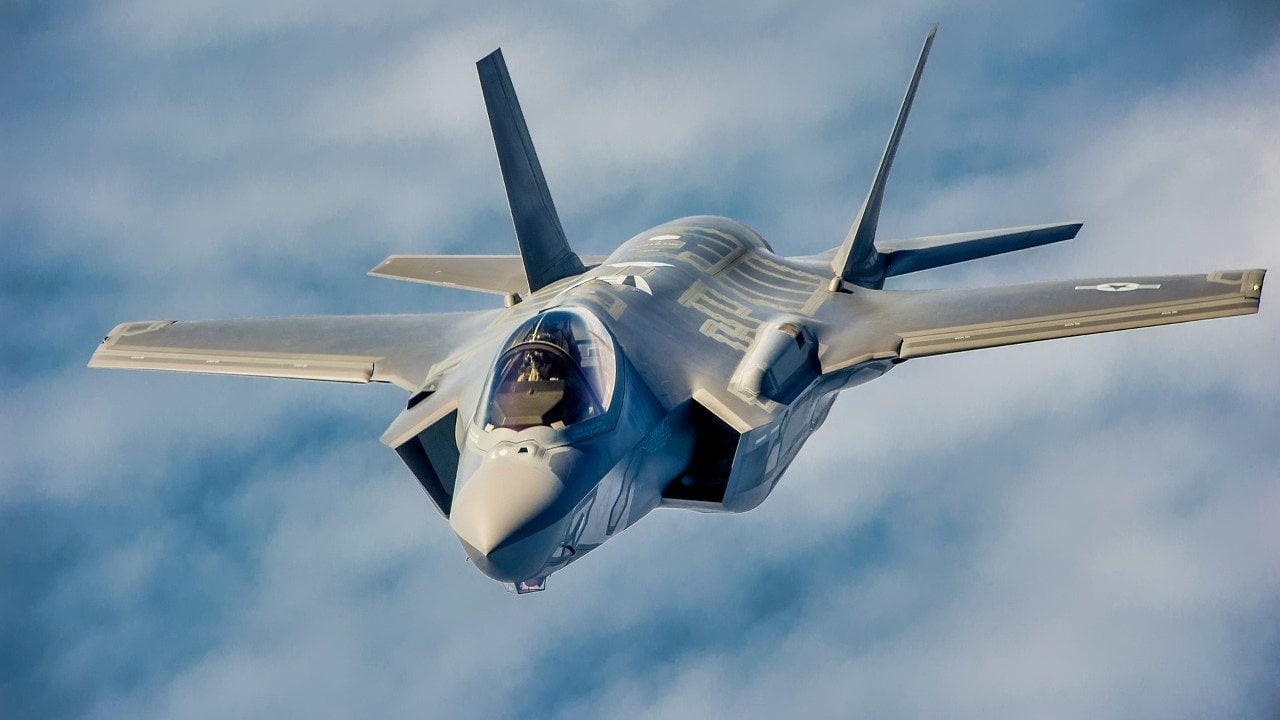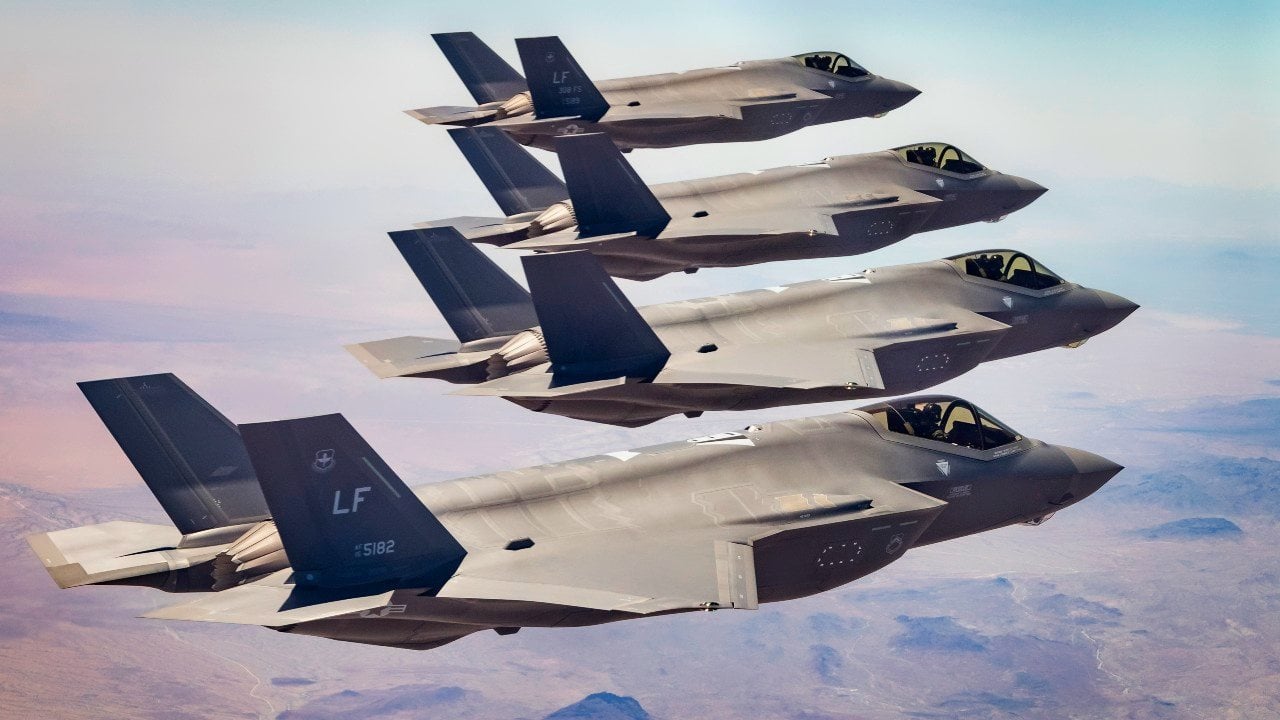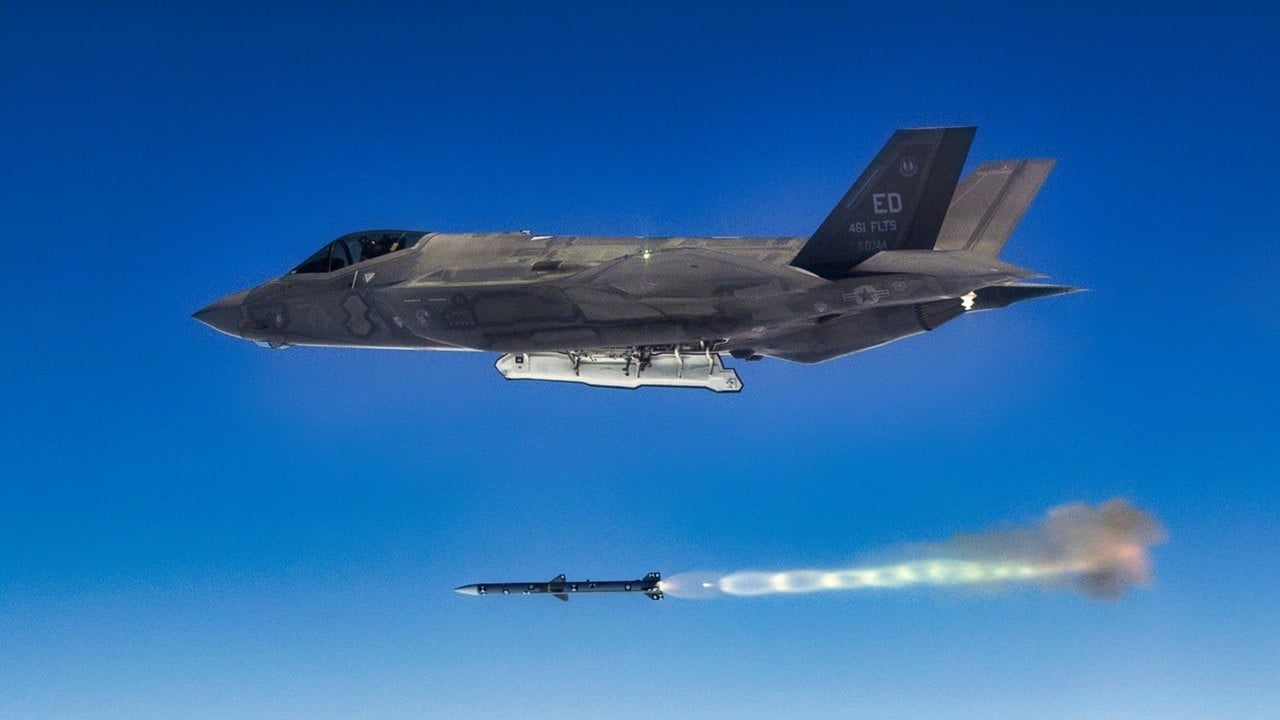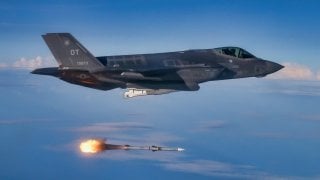F-35 Fighter Has Failed to Meet 'Annual Mission-Capable Goal' 6 Years Straight
The F-35 Lightning II, a cornerstone of U.S. military air superiority, faces significant readiness challenges. Despite the U.S. military operating 630 of the aircraft, a Government Accountability Office (GAO) report reveals that all three branches flying the F-35 have failed to meet mission-capable (MC) rate targets for six consecutive years.
What You Need to Know: The F-35 Lightning II, a cornerstone of U.S. military air superiority, faces significant readiness challenges. Despite the U.S. military operating 630 of the aircraft, a Government Accountability Office (GAO) report reveals that all three branches flying the F-35 have failed to meet mission-capable (MC) rate targets for six consecutive years.

-For example, the Air Force's F-35A MC rate was just 52% in 2023, far below its 75–80% goal.
-These issues persist despite $12 billion spent on sustainment. While readiness challenges are widespread across U.S. aircraft, the F-35's modernity underscores the urgency of resolving maintenance and spare parts shortfalls to counter threats like China and Russia.
The F-35 Has a Clear Problem
The F-35 Lightning II is one of the most important procurement programs of the U.S. military in recent history. The aircraft is the key to U.S. superiority in a near-peer conflict with China or Russia until more advanced platforms that are still on the design board arrive later in the century.
An added benefit of the F-35 Lightning II is its numbers. Currently, 19 countries have ordered 3,542 F-35s. Specifically, the 19 members of the F-35 Joint Strike Fighter program have ordered 2,627 F-35As, 575 F-35Bs, and 340 F-35Cs.
The U.S. military remains by far the largest customer of Lockheed Martin, with a total order for 2,456 aircraft for the Air Force, Navy, and Marine Corps. The Air Force has ordered 1,763 F-35A, the Marine Corps has ordered 353 F-35Bs and 67 F-35Cs, and the Navy has ordered 273 F-35Cs. Besides being the largest customer of the F-35 Lightning II, the U.S. military is the only one flying the F-35C, which is particularly designed for aircraft carrier operations.

Right now, the U.S. military has around 630 F-35s in service.
But what is the point of having aircraft that aren’t flying?
Alarming Readiness
In a recent report, the Government Accountability Office (GAO) revealed that all three services flying the F-35 Lightning II have failed to meet their annual mission-capable goal for six years in a row.
GAO conducted the report at the bid of Congress and reviewed the operation and maintenance spending, as well as mission capable (MC) rates. The latter is quite important and reflects the percentage of time that an aircraft can conduct at least one mission. The higher the percentage, the more combat-ready the fleet.
The specific MC data remains classified, but it is safe to assume that they are below target. For example, the Air Force has been aiming for an average MC rate between 75 to 80 percent for its F-35A Lightning II fleet. But in 2023, it conceded that the number was around 52 percent and off target.

The U.S. military failed to reach its readiness goals with the F-35 despite spending more than $12 billion to sustain the stealth fighter jet and ensure it is ready for combat if the need arises.
To be fair, the issue isn’t peculiar to the F-35. The Department of Defense faces a wider issue of readiness with its aircraft. Indeed, of the several different platforms in service with the Air Force, Navy, and Marine Corps, only the A-10 Warthog, F-15C/D Strike Eagle, and F-16C/D Fighting Falcon achieved their intended readiness, but only for a number of years and not for all six years under review.
But what makes the F-35 different is that it is a completely new aircraft, whereas a lot of the other platforms have decades of services under their wings. The Air Force has claimed a lack of spare parts and maintenance issues as the reason for the low readiness levels. But, in order to present a credible deterrence against near-peer adversaries like China and Russia, such issues need to be prioritized and resolved quickly rather than allowed to linger for years.
About the Author
Stavros Atlamazoglou is a seasoned defense journalist specializing in special operations and a Hellenic Army veteran (national service with the 575th Marine Battalion and Army HQ). He holds a BA from the Johns Hopkins University and an MA from the Johns Hopkins’ School of Advanced International Studies (SAIS). His work has been featured in Business Insider, Sandboxx, and SOFREP.
Image Credit: Creative Commons.


